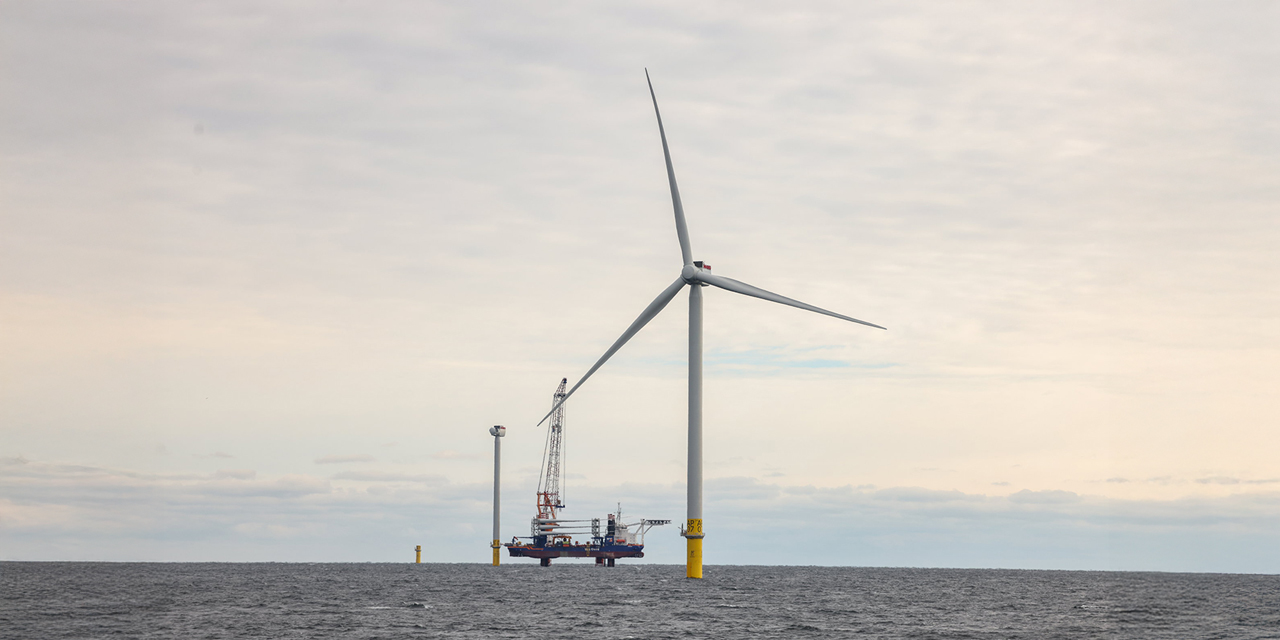
Last week, Secretary of the Interior Doug Burgum ordered construction halted on Empire Wind, the planned array of roughly 150 wind turbines off the coast of Long Island. In doing so, he may have sunk the centerpiece of New York State’s energy policy—thank goodness.
The agency that, among other things, oversees the National Park Service shouldn’t have been the first line of defense for electricity customers. But Burgum said his team spotted “serious deficiencies” in federal approvals granted to the offshore windfarm—necessary because the feds have jurisdiction over the nation’s continental shelf. The Biden administration had signed off on myriad permits and consultations with other federal agencies, deeming the years-long process (which began in President Trump’s first term) “complete” in March 2024. Objections lingered though: they ran the gamut from concerns about marine life and viewsheds to local fishermen facing significant economic harm.
Finally, a reason to check your email.
Sign up for our free newsletter today.
The major beneficiaries of Empire Wind’s potential cancellation aren’t whales and fish—they’re New York electricity customers, who would have paid billions in subsidies for a less reliable grid.
Consider the poor governmental choices that brought us here. Over the past decade, Albany’s energy policy has been a tangle of unreachable goals, double standards, and labor-union giveaways—all hidden behind rules that prevent utilities from itemizing costs on customer bills.
New York environmentalists have long harbored a fixation on offshore wind, often pointing enviously to its deployment in northern Europe (where turbines are built in shallower waters, benefit from more favorable wind patterns, and compete against much higher energy prices). In 2010, officials in Governor David Paterson’s administration briefly mollified activists with a study showing the “feasibility” of installing turbines on Lake Ontario—at staggering cost. Soon afterward, though, the activists were pressuring Paterson’s successor, Andrew Cuomo, to adopt impractical renewable-energy targets centered on offshore wind. That yielded a 2018 plan to subsidize the construction of the offshore turbines (only later explicitly sanctioned by the state legislature).
This went entirely against the state’s usual competitive approach to power generation. New York reduced its electricity costs beginning in the late 1990s by getting monopoly electric-transmission utilities out of the generation business and instead encouraging power plants to compete. The New York Independent System Operator, the nonprofit created to oversee the wholesale market, holds auctions for electricity every five minutes. The process rewards the most efficient plants, encourages the construction of even better ones, and keeps older units on the sidelines unless they’re needed.
New York’s offshore wind scheme, however, went the other way. Under it, the state planned to force utilities, and large electricity customers like hospitals and factories, essentially to pay the difference between the inflated rates promised to wind developers and the actual price of electricity on the competitive market. Most of this premium would have been paid by customers north of New York City, who would have used essentially none of the electricity. Worse, Albany here singled out one politically fashionable technology and slammed the door on proven ways of reducing emissions.
The favoritism didn’t stop there. To qualify for subsidies, the developer picked by state officials had to hold a lease, and by 2018, only one company had such a lease in New York waters: Empire Wind.
Companies had been asking the feds to open up more leases for competition, but New York rushed ahead to award its first round of subsidies before more bidders could qualify. (Albany explicitly asked the feds to block new leases from being created off the Hamptons.) In the end, just four bidders made proposals, and all were positioned to demand a king’s ransom.
By then, Governor Cuomo was eagerly positioning himself as a national leader on climate policy—first pledging to have half of New York’s electricity come from renewable sources by 2030, then raising the target to 70 percent. He ultimately signed contracts with Empire Wind and a second firm, Sunrise Wind, under a plan that had the state paying both companies roughly twice the market rate for electricity.
When project costs ballooned amid Covid-related supply-chain disruptions, Governor Kathy Hochul, Cuomo’s successor, allowed Empire and Sunset to renegotiate their contracts, saddling ratepayers with billions of dollars in additional costs. The exact bill for these subsidies remains to be determined, but the premium associated with Albany’s guarantees to Empire Wind is likely to run well into the billions.
Empire Wind would have been the first of many zaps for New York ratepayers. The state wants 9,000 megawatts of offshore wind within a decade, more than ten times what Empire Wind was set to produce. New York is unlikely to hit that target, but the closer it gets, the more it will confront another cost. Lulls in North Atlantic winds would leave turbines virtually idle for days at a time. Absent other sources to pick up the slack, the state would then need a massive number of batteries to keep the lights on. The cost of these would far exceed the tens of billions of dollars Albany planned to spend on wind turbines. To date, state officials still haven’t estimated what this carbon-free electric grid would cost, or the monthly rates customers big or small would face.
The price of New York’s idealism would run across state lines, too. The Empire State would become more reliant on adjoining grids, particularly those of Connecticut and New Jersey. That would mean higher electricity costs for their residents.
Governor Hochul condemned Burgum’s “federal overreach,” and she’s right that Washington should generally have little say in how states regulate their utilities. In this case, though, New Yorkers and their neighbors should be grateful that the feds are pouring some cold seawater on Albany’s worst ideas—before ratepayers get soaked.
Photo by Steve Pfost/Newsday RM via Getty Images
City Journal is a publication of the Manhattan Institute for Policy Research (MI), a leading free-market think tank. Are you interested in supporting the magazine? As a 501(c)(3) nonprofit, donations in support of MI and City Journal are fully tax-deductible as provided by law (EIN #13-2912529).
Source link

















